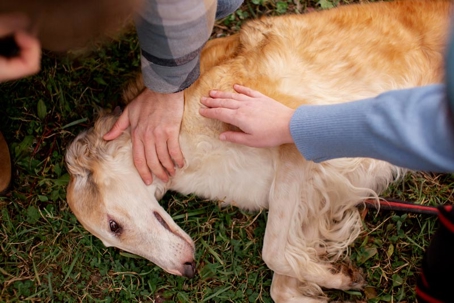The rise in dog park popularity across Louisiana has brought a welcome sense of community and companionship for both pet owners and their animals. But along with the open space and unleashed fun comes a growing number of legal questions, particularly when someone leaves the park injured — and unsure of who’s responsible.
Dog park injuries come in many forms. A person may get bitten while trying to separate two fighting dogs. Someone might be knocked over by an overly enthusiastic pup chasing a ball. A child could trip over uneven ground or slip on wet grass. Sometimes it’s a bite, sometimes it’s a fall, and other times it’s the result of poor maintenance or faulty fencing. The one thing these incidents all have in common is the uncertainty they leave behind. When an injury occurs in a public space, the question becomes: who pays for the medical bills?
Liability for Dog Behavior in Public Spaces
Louisiana law generally holds a dog owner responsible for injuries caused by their animal, but that responsibility depends on the specific facts of the situation. The legal term often applied here is negligence — meaning the owner failed to take reasonable precautions to prevent foreseeable harm.
For example, if a dog known to be aggressive is brought to an off-leash park and injures someone, the owner may be liable if it can be shown they knew, or should have known, that the animal posed a risk. The same applies to dogs who frequently jump on people or chase small children. Even if the owner didn’t intend harm, failing to control the animal in a shared space may be enough to create legal exposure.
However, not every dog bite or collision results in an automatic claim. If the injured person was behaving recklessly, provoking the animal, or ignoring posted rules, shared responsibility may come into play. Louisiana recognizes comparative fault, meaning that the actions of both parties are considered when determining liability and damages.
Injuries Related to Park Conditions
Not all dog park injuries are caused by dogs. Poor maintenance, hidden hazards, or faulty design can also contribute to harm. Broken fences, holes in the ground, slippery surfaces, or unsecured gates can all lead to incidents ranging from twisted ankles to head injuries.
In these cases, responsibility may shift to the owner or manager of the property — which could be a city, parish, or private entity. This falls under premises liability law, which holds property owners accountable for unsafe conditions if it can be shown that they knew or should have known about the hazard and failed to address it.
Establishing fault in these scenarios often requires evidence that the hazard existed long enough to have been noticed, or that the owner failed to perform routine inspections and maintenance. Photographs, witness accounts, and prior complaints may become key factors in such claims.
Injuries While Breaking Up Dog Fights
Injuries sustained while trying to stop a fight between animals are surprisingly common. An owner may attempt to pull their pet away and end up scratched, bitten, or knocked down in the process. These injuries can be severe and lead to lasting medical issues.
Responsibility for such injuries often rests with the owner of the dog that initiated the attack. If the dog had a history of aggression or was not being closely monitored, it becomes more likely that the injured party may have a claim against the owner for medical expenses and related damages. However, as with all injury cases, evidence and documentation are crucial.
Children and Dog Parks
Children bring additional legal considerations. Young children are not held to the same standard of awareness or caution as adults, and courts may view incidents involving minors through a different lens. If a child is injured by a dog or trips in an unsafe area of the park, the analysis of fault can include factors such as fencing design, signage, and supervision.
Even well-behaved dogs can unintentionally injure a child by jumping or running past at full speed. These situations often raise complicated liability questions involving both the dog’s behavior and the environment in which the incident took place.
Insurance and Coverage Considerations
In many cases, homeowner’s or renter’s insurance policies may provide coverage for dog-related injuries, even if the incident occurs outside the insured’s property. However, not all policies cover all breeds, and coverage can be denied if the dog has a documented history of prior incidents.
When a claim is filed, the insurer will often investigate whether the injury was preventable and whether proper care was taken to supervise the animal. Likewise, claims involving unsafe park conditions may fall under municipal insurance programs, which have their own notification and claims procedures.
Why Documentation Matters
Delayed reporting, missing details, or lack of medical records can significantly weaken an injury claim. Anyone injured at a dog park should seek medical attention promptly and keep a record of all treatment, symptoms, and expenses. Photographs of the scene, contact information for witnesses, and a written summary of what happened can all support the case if legal action becomes necessary.
Final Thoughts
Dog parks offer a space for animals and owners to enjoy time outdoors — but they also present shared risks. When something goes wrong, the question of who pays the medical bills depends on many factors: the behavior of the dogs, the actions of the owners, the safety of the environment, and the availability of evidence.
Clear thinking, timely action, and a careful look at the facts are the best tools for determining responsibility. Injuries may be accidental, but accountability is not. When injury occurs, understanding the legal framework is the first step toward resolution.
The post Dog Park Injuries: Who Pays the Medical Bills? appeared first on John Michael Morrow Law Firm.

